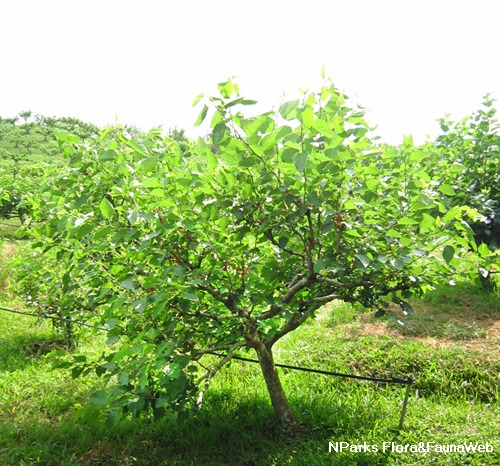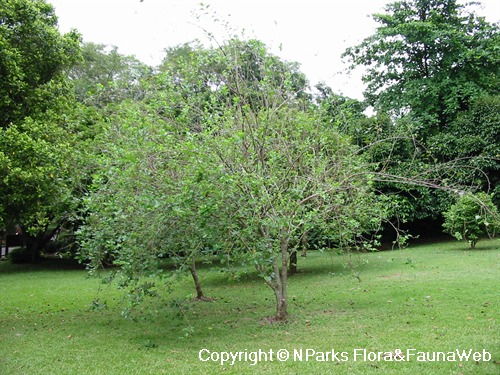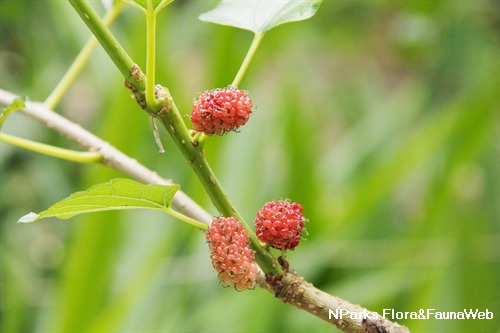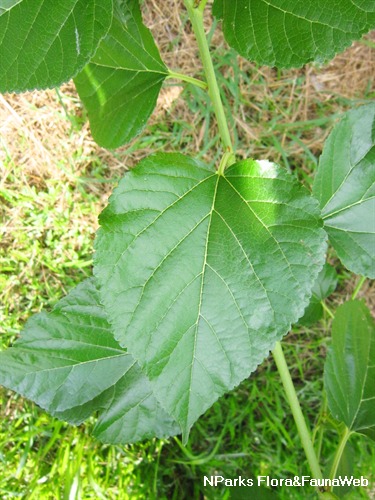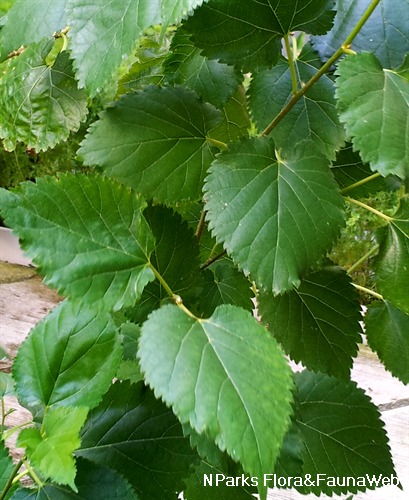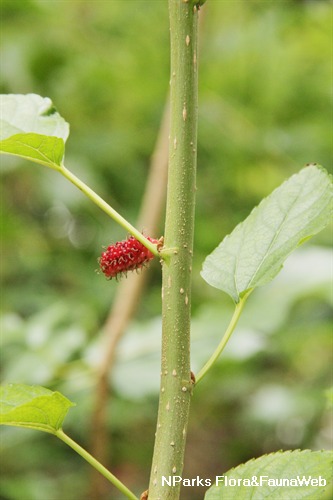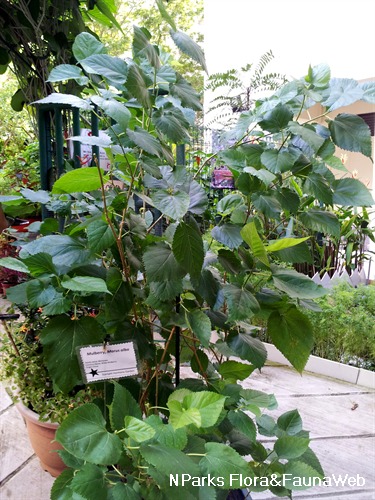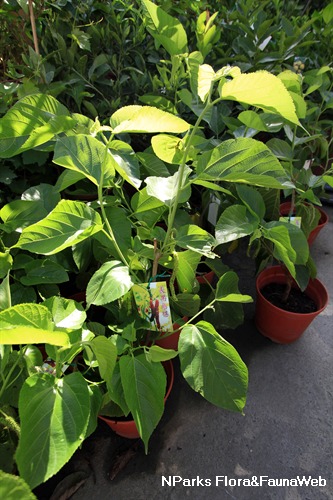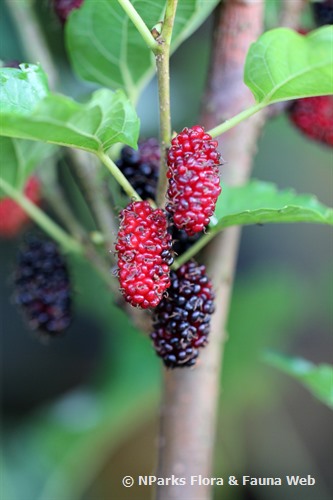
Name
Classifications and Characteristics
| Plant Division | Angiosperms (Flowering Seed Plants) (Dicotyledon) |
|---|---|
| Plant Growth Form | Tree (Small (6m-15m)) |
| Lifespan (in Singapore) | Perennial |
| Mode of Nutrition | Autotrophic |
| Maximum Height | 9.1 m to 15.2 m |
Biogeography
| Native Distribution | China & Japan |
|---|
Description and Ethnobotany
| Growth Form | Small tree up to 15 m tall which has a spreading crown. |
|---|---|
| Trunk | Immature bark and inner bark is bright orange, while mature bark is grey and irregularly fissured. |
| Roots | The bark covering the roots is bright orange. |
| Foliage | Glossy leaves are either lobed or without lobes. The upper surface is hairless or rough with small raised dots, while the lower surface is hairless or hairy along the veins. |
| Flowers | Male and female flowers occur on separate individuals. Small, green male flowers are arranged in an inflorescence known as a catkin (2.5-5 cm long), while tiny female flowers are arranged in a spike inflorescence. |
| Fruit | Fleshy fruits are known as berries. Black, pink or white fruits are oblong. |
| Ethnobotanical Uses | Edible Plant Parts : Edible Fruits Food (Fruit or Vegetable) Others: In China, silkworms raised for the silk industry are mainly fed leaves from this species. |
Plant Care and Propagation
| Light Preference | Full Sun |
|---|---|
| Water Preference | Moderate Water |
| Plant Growth Rate | Moderate |
| Propagation Method | Seed |
Foliar
| Mature Foliage Colour(s) | Green |
|---|---|
| Foliar Margin | Serrate / Toothed |
| Leaf Area Index (LAI) for Green Plot Ratio | 3.0 (Tree - Intermediate Canopy) |
Fruit, Seed and Spore
| Mature Fruit Colour(s) | Black, Red |
|---|---|
| Fruit Type | Fleshy Fruit , Berry |
Image Repository
Others
| Master ID | 1742 |
|---|---|
| Species ID | 3035 |
| Flora Disclaimer | The information in this website has been compiled from reliable sources, such as reference works on medicinal plants. It is not a substitute for medical advice or treatment and NParks does not purport to provide any medical advice. Readers should always consult his/her physician before using or consuming a plant for medicinal purposes. |


